
Field Report: Neumann NDH20 Headphones
Greg Simmons puts Neumann’s “love ‘em or hate ‘em” NDH20 headphones through their paces on a recording expedition in the north of Thailand...
Neumann announced the NDH20s, their first headphones, at the January 2019 NAMM show. A year later the internet was filled with highly polarised reviews: sound engineers, recording musicians, audiophiles, commuters and vloggers either loved them or hated them, without much in between. Weighing up the pros and cons from numerous reviews, one thing becomes apparent: Neumann never intended to make a crowd-pleaser. They went into this exercise with a clearly defined understanding of who their market was, how that market uses headphones, and what that market expects from Neumann. I’m part of that market, and have been grappling with a headphone-related issue for some time. Could the NDH20s be a solution?
THE ISSUE
I’ve spent the last four years chasing endangered music around South East Asia. I’m often recording in very close proximity to the performers, sometimes sitting on the floor next to them or standing in front of them – typically less than two metres away. Isolation and accuracy are vital if I want to come away with something worth listening to.
For in-the-field monitoring I use a pair of Etymotic ER4 microPro canal phones. Similar in size and weight to the earbuds supplied with mobile devices, the ER4s offer excellent sound quality along with 35dB to 42dB of isolation, a sensitivity of 98dB at 0.1V, and a low impedance of 45 ohms – three specs that collectively make them easy to drive to useful SPLs from battery-powered devices. They go about 15mm into the ear canal (hence ‘canal phones’) but inserting and removing them correctly is fiddly and much more time-consuming than slipping on and off headphones. Once correctly inserted I try to avoid removing them, but there are many times during a session when it’s unavoidable (eg. talking with a translator who is not on-mic).
I can live with the ER4’s fiddle-factor because their sound quality and isolation let me quickly find the best spot for my mics, and the benefits of good mic placement ripple all the way through from the downbeat to the upload. There is, however, one unavoidable problem: you can’t hand them around to the performers for a listen unless you’re keen on sharing earwax. (Not to mention that in some cultures touching a person’s head is a considerable faux pas, which makes it difficult to fit canal phones on someone you cannot communicate with verbally.) So I also carry a pair of Audio-Technica M50Xs; they’re easy to slip on and off, they’ve proven to be rugged in the field, and they don’t collect earwax. They’re great headphones and a good back-up, but they can’t match the ER4’s sound quality and isolation.
My life on the road would be simpler if I had a set of headphones as rugged as the M50Xs but with the isolation and sound quality of the ER4s. Three things that every NDH20 reviewer agrees on are their build quality, their isolation and their ability to reveal tiny details, so I added them to my wish list and shared it with Santa.

YOU BETTER NOT POUT
I must’ve been a good boy in 2020. The sleigh touched-down in Bangkok shortly before a planned recording expedition in the north of Thailand. After paying the hefty import duty because the package had ‘Amazon’ stamped all over it (what did I tell you, Santa?), I took delivery of the NDH20s.
Straight out of the box they look like they’re made entirely from metal, rubber, fabric, and shiny little screws. There is plastic, of course, and much of it fills hollow aluminium shapes in a symbiosis of weight, strength and cost. They seem rugged enough to withstand being pulled off a vocalist’s head and crashing on to a parquetry floor, which is probably one of the damage scenarios Neumann designed them for.
In contrast, the M50Xs are almost entirely plastic – but considering where my M50Xs have been and what they’ve gone through, they’re obviously rugged enough for the job. With the NDH20s being 35% heavier and three times more expensive, I’d be very disappointed if they could not handle the same levels of abuse.
Thoughtfully, Santa included a pair of genuine Audio-Technica replacement earpads for the M50Xs and a set of genuine Etymotic replacement foam eartips for the ER4s – so any isolation comparisons could be made on a level playing field. Stuffing it all into my backpack, I boarded the overnight train to Chiang Mai.
Neumann never intended to make a crowd-pleaser.
PINS & PENNIES
I spent a few days in a co-working space, mapping out the expedition and taking advantage of the relatively quiet office environment to get used to the sound of the NDH20s. It’s always important to familiarise yourself with monitoring before using it, and this was especially important with the NDH20s because they didn’t sound like any other headphones I’d used before. I liked what I was hearing, but I wanted to know why I liked it before venturing into the field with them. Were they truly accurate? Or was I enchanted by euphonics that would ultimately lead me astray? They seemed dull at first, and yet they were effortlessly highlighting details in albums that I thought had no details left to highlight. Dull headphones don’t do that. Despite sounding different to any other headphones I’d used before, there was something oddly familiar about their sound – but that penny refused to drop.
Meanwhile, I’d been dropping pins on Google Earth – the world’s cheapest drone. I was scanning the hills of Northern Thailand looking for a very specific piece of ancient architecture. About 60km north-east of Chiang Mai I found what I was looking for. The satellite images showed a cluster of villages spaced along 12km of narrow winding road, and at least four of them contained circular patches of compacted earth – these were jakuh, the traditional dancing grounds of the Lahu ethnic group whose music I was keen to record. Loading the coordinates into Google Maps, I hired a scooter and rode out of town; feeling like Indiana Jones, looking like Mr Bean.
19°03’04”N, 99°27’56”E
My accommodation was a small hut on a hill overlooking Doi Mod – a village at the end of the road populated by the Lahu Na (Black Lahu) ethnic group. After settling in, I masked up and headed down to the village, met with one of the ‘head men’, and organised some recordings. My host, Noi, accompanied me as translator and to ensure the villagers didn’t chase me away through fear of covid, as they’d done with recent unaccompanied Westerners.
The first recording session was a wind instrument called the ‘nor’, the second a string instrument called the ‘tue’ (pronounced ‘toong’, quickly and abruptly), and the third included the nor, the tue and a bamboo flute. The head man also invited me to record a ceremony taking place that night in the jakuh. My goal, as always, was to make ‘contextual recordings’, ie. to capture the instruments clearly as the dominant sound, while also presenting them in the context of the sounds of the village. Microphone placement and choice of polar responses are critical with this approach, and headphones with good isolation and sound quality are therefore an obvious requirement.
These sessions presented excellent challenges for headphone isolation, with all of the typical village sounds going on in the background: roosters, chickens, kids, the occasional passing motorbike, and the chatter of curious locals. To add to the challenge, I had arrived at a busy time in the village with lots of hammering and sawing going on as they renovated their huts in preparation for Chinese New Year.

THRESHOLD OF UNCERTAINTY
The NDH20s were the only monitors I took to the Doi Mod sessions because I didn’t want the option of ‘running back to Momma’ if things got confusing with the Neumanns – that would be a fail, not a field test. The ER4s and M50Xs remained in my hut, a one-hour return journey up and down a very steep walking track…
The NDH20’s balance of sound quality and isolation in the field was as good or better than any other closed-back headphones I can remember using. I’ll qualify that by saying a) I’ve used closed-back headphones with better isolation but they were essentially industrial ear-muffs fitted with headphone drivers and offered nowhere near the NDH20’s sound quality or comfort, and b) I’ve used headphones with similar and perhaps superior sound quality to the NDH20s but they were not closed-back and offered no isolation.
The previous tests I conducted in the co-working space in Chiang Mai showed that one significant advantage the NDH20s had over the M50Xs (and, I assume, most other closed-back headphones) was their isolation in the upper midrange and above. This makes the leakage duller and easier for the ear/brain system to ignore when it is not part of the sound being monitored, such as people talking in the background while you’re playing back music. (In this respect the NDH20s outperformed the Bose QC35 active noise-cancelling headphones, but were no match for their low frequency cancellation.)
The situation is different when you’re recording and monitoring at close proximity to the sound source, as is often the case in my application. Any acoustic leakage into the headphones from the sound being recorded combines with the electrical signal being reproduced by the headphones, altering the perception of lows and low mids and leaving an element of uncertainty regarding microphone polar response and placement. In this respect the NDH20s were better than most other closed-back headphones I remember using, but I still found myself regularly muting the monitoring to check how much leakage I was hearing and wondering if it was affecting my decision making.
If there’s a threshold where leakage through the headphones no longer introduces uncertainty in the monitoring when recording unamplified acoustic music at close proximity, the ER4s sit just above that threshold while the NDH20s sit just below it, and the M50Xs sit not far below the NDH20s. It’s worth noting that the session in the jakuh put me about four metres from the sound source, and in that situation the NDH20’s isolation was more than adequate.
Or was I enchanted by euphonics that would ultimately lead me astray?

THE PENNY DROPS
A couple of nights after the jakuh session I was in the mood for one of my more challenging reference albums: Jon Hassell’s ‘Fascinoma’. It’s an album of highly immersive and enveloping sound quality and depth when heard through decent monitors, with lots of barely audible sounds in the background extending far off into the distance, but it can be a rough ride through poor monitors. Even though the NDH20s are closed-back headphones, I felt unusually inspired and excited about what I was hearing – to the extent that I played it through twice, and even backtracked over a few parts where the NDH20s brought forward things I’d never paid attention to before; unwrapping and rendering them precisely. That is almost certainly due to their combination of low distortion and isolation. There can be no doubt that the NDH20s deliver a high fidelity performance, but that ‘oddly familiar’ penny mentioned earlier still hadn’t dropped.
The next morning I received a message from an occasional client who was about to release an album of meditative acoustic music, but had reservations about the finished masters. After an hour on village wifi I’d downloaded enough 44.1k/16-bit audio to understand her reservations. This was spatial and enveloping acoustic music, but the end result missed the required aesthetic – more than likely the result of mixing and mastering remotely in the age of covid. The artwork was done, names were credited, and the budget was nearly exhausted so re-mixing was out of the question. “Can you fix it?” she asked, the tone of her voice hinting at the discretion required.
I’ve had a noticeable increase in this kind of ‘invisible’ background work ever since covid, and I normally use the ER4s and M50Xs for it – along with the Grover Notting CR1 cross-reference monitors, but I didn’t have them with me. Noting the aesthetic similarities between the album in question and ‘Fascinoma’, I chose to use the NDH20s instead of the ER4/M50X combo. Loading the album and ‘Fascinoma’ into the same session for quick cross-referencing, I got to work. The album was undeniably well-engineered; good sounds, tasteful EQ choices and expertly applied compression with no telltale artefacts. Despite being miked a little too closely for the genre and also compressed a little too much for the genre, the overall result was clean and well-balanced so I attempted to bend it towards the more appropriate ‘Fascinoma’ aesthetic: a subtle high frequency roll-off to create a greater sense of distance between the mics and instruments, a broad low frequency shelf to bring up the overall warmth and enhance the slight low frequency phase differences between channels that help to create a sense of immersion, and a touch of MS processing to open out the image. Finally, a couple of high Q dips in the mids to tame the attacks on some chimes, and… voila! I was surprised by how quickly and assuredly it all came together, and that’s when the penny dropped.
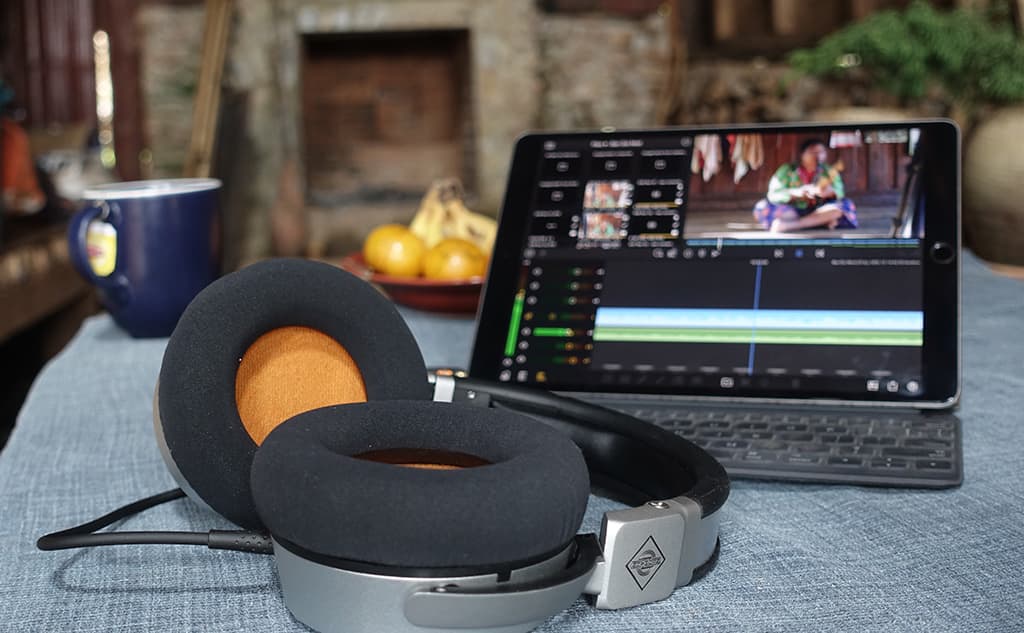
KA-CHING!
The NDH20s don’t sound like other headphones because they’re not supposed to. Here’s my take on it…
Imagine you’ve been tasked with designing the first pair of headphones to carry the Neumann logo. You’ve got to come up with a useful audio monitoring tool that’s shaped like headphones, and there’s only one restriction: pasting ‘Neumann’ over ‘Sennheiser’ is out of the question. Considering the vast number of headphones on the market that are within a dB of measurement perfection, designing yet another pair of those is not a worthwhile goal. So you embark on a scoping exercise based on three questions. Who is Neumann’s market? What are their headphone requirements? What do they expect from Neumann?
The results of that scoping exercise are written clearly on the ear cups: ‘Studio Headphone’. Not ‘Audiophile Headphone’, not ‘Commuter Headphone’, and not ‘Vlogger Headphone’. The NDH20s are clearly aimed at sound engineers and recording musicians who need the sound quality of open-back headphones for mixing and cross-referencing, the isolation of closed-back headphones for monitoring while recording, and the ruggedness required to handle pulled cables and impacts with a studio floor.
As it turns out, those qualities also make them useful for my kind of work, although some might consider them too big and heavy to lug around in a backpack, too attractive to risk scratching, or too expensive to hand around to people who habitually whirl earbuds around their fingers like fidget spinners.
The NDH20s don’t sound like other headphones because they’re not supposed to.
MY THOUGHTS FOR A DROPPED PENNY
Have you ever worked in an acoustically-designed control room with high quality monitors calibrated to 83 phons (or thereabouts) at the monitoring position, for the best translation between higher and lower playback levels? That’s the ‘oddly familiar’ sound I was referring to earlier. Play the NDH20s at something close to a calibrated studio monitoring level and their tonality is more like studio monitors than headphones. They seem to have been ‘voiced’ to put a metre or two of air between you and the drivers, just like studio monitors – except they’re up against your ears, leaving nowhere for small details to hide. I’m willing to bet that in a mixing-through-speakers environment, cross-referencing through the NDH20s at the same calibrated SPL as the speakers would provide valuable feedback that correlates with whatever concerns you’re hearing through the speakers, which might be more valuable than a contrasting and ambiguous second opinion with which you need to find a middle-ground.
Work with the NDH20s as if you’re working with speakers and you’ll probably find, as I did, that mic placement, EQ and dynamics decisions become faster and easier. Don’t forget that you’re working in headphones, however; panning and spatial effects are still going to need the same careful attention they’ve always required when working in headphones, and keep a careful eye on the goniometer.
Speaking of panning and spatiality… The NDH20s don’t cast the wide soundstage available from open-back headphones, but their ability to reproduce solid images within their soundstage is impressive. So is their ability to reproduce depth; not just relative depth (ie. this instrument is closer to me than that one), but absolute depth (ie. how far is this instrument from me?). This kind of depth reproduction is difficult to achieve with any monitoring system, and requires very precise matching between channels to achieve.
It’s tempting to write a full review of the NDH20s because they’ve been misrepresented by reviewers who have mistaken them for something else, but the reality is that they’re a two-year-old product with plenty of reviews out there from across the spectrum of headphone users. If you’re an audio professional or recording musician in the market for headphones, Sam Inglis’ review in Sound On Sound magazine aligns with many of my own thoughts about the NDH20s. And finally, remember that buying headphones is like buying prescription lenses and running shoes at the same time – there’s no point in taking other people’s endorsements or denouncements too seriously because you’ve got to find the pair that brings your hearing into focus and that fit you comfortably.
OUTCOME
At the start of this report I explained the issue I had with my current in-the-field monitoring, which was based on a set of Etymotic ER4 canal phones for isolation and accuracy, and a set of Audio-Technica M50Xs for passing around to the performers. I wondered if Neumann’s NDH20s could replace both of them.
So far I’ve used the NDH20s as the sole monitoring on five village recording sessions, and happily shared them with people who habitually whirl earbuds around their fingers like fidget spinners. I’ve also used them as part of my mobile post-production rig for editing and mastering my recordings, and to ‘re-master’ an album for someone else. In terms of isolation and sound quality, I believe they’re the best closed-back headphones I’ve ever used. Could they replace my ER4 and M50X combination in the field? If I was not comfortable working with in-ear monitoring, the NDH20s would easily be my first choice. However, I am comfortable working with in-ear monitoring so in situations where I’m working a metre or two from the performers, the extra isolation of the ER4s is still worth their fiddle-factor.
The outcome of this exercise it that the NDH20s have replaced the M50Xs, but considering the price difference it was a sonic upgrade that ventured deep in to ‘diminishing returns territory’. My upgraded monitoring system is about 150 grams heavier and marginally bulkier than it was before, but it’s worth it. I expect that on recordings where I’m not working a metre or two from the sound source I’ll probably just use the NDH20s, but pack the tiny ER4s in case their fiddle-factor is justified.







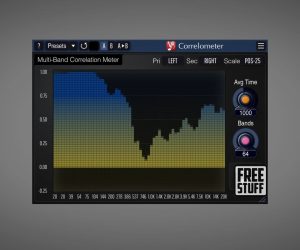
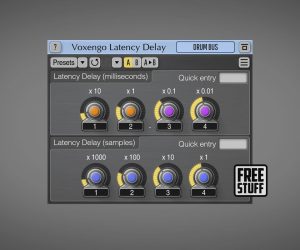

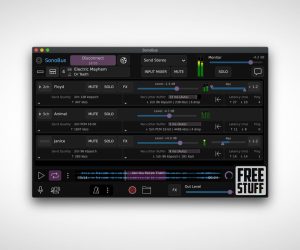
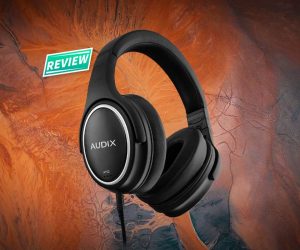




Wonderful review!
Thank you, I’m glad you enjoyed it and hopefully found it valuable!
maybe a mention from the editor, how much ? where can u hear them?
If you’re in Australia, I believe the RRP is $869 AU. Regarding where you can hear them, I’d suggest asking around your local high-tech music dealers. Thankfully, Neumann is a popular brand with a huge range of products, so they shouldn’t be too hard to find.
This review is a fine piece of work….. as one who’s distrusted headphones for getting that last little bit of correctness…forever… (!! I’m an old man going through the process of dealing with not altering my mixes in spite of creeping deafness) I’m mightily encouraged to wholeheartedly invest in a set of these Neumanns, knowing that their truthfulness won’t leave me in the position of repair that you so eloquently and kindly alluded to in the body of your review. Thanks SO much for taking the time, doing the work.
I’m glad you found the field report useful. The only caution I’d suggest is try-before-you buy if possible because a) these are not cheap headphones and b) they do tend to polarise the market.
This polarisation is evident in the comments to the numerous places I have shared this field report on social media. All of the responses have been positive overall, but probably 1 in 10 has said that they tried the NDH20s but felt they were not for them. That’s not a bad outcome for any headphones, really, when you consider the number of boxes they have to tick (not just sound and build quality, but also physical fit and comfort).
Interestingly, one social media reader commented recently that at first he didn’t like them but then he had a similar ‘penny dropping’ moment as I mentioned in my field report and now likes them…
I think the takeaway from all the comments I’m seeing on social media (in response to this field report) is that the NDH20s are not like other headphones, and should be judged on their own ‘on the job’ merits. It is probably a bit simplistic to AB the NDH20s against an established industry standard because they are not like other headphones and therefore might not AB well. They actually require a slight ‘change of gears’ when listening – working as if you’re monitoring through speakers rather than through headphones.
I hope that is helpful…
Greg I really enjoyed your review. I’m keen to try them for the same reasons you’ve highlighted.
Also thank you for the heads up on Jon Hassell, I’m listening now and love it!
I’m glad to hear that, Craig. Please let me know your impressions…
The Jon Hassell album is one of my all-time favourites! One of those albums I play rarely, and only under the circumstances. When I’m in the right mood and so on, it’s a treasure…
A really detailed and – as expected from yourself – thorough review. I am heading to my Pro Audio shop to trial a pair. Thanks Greg
I’m keen to read what you think about them, David. The only thing I caution is ABing them against a known reference headphone. To me, and others who have commented on social media to my field report, the ‘penny dropping’ moment happens when they start working with them. So perhaps take a laptop to your high tech music shop with a session loaded on it, plug in the Neumanns and start messing around on the session. I think that would be far more informative because I feel that it’s not fair to compare them against other headphones. Their whole approach is somewhat different, kind of like speaker sound in a headphone.
An interesting review. The tough part for a working pro is that it is rather difficult to find places to audition really good headphones, especially those aimed at professional use. Especially true in times of Covid where we can’t or are unlikely to travel to trade shows.
Thanks again. Since in ear monitors don’t really fit my comfort level for day to day work, at least I know that these new Neumanns might do the job for me.
Thank you Preston, I’m glad you found the field report helpful. As always with headphones, whenever possible try before you buy because, apart from the sound issues and our own preferences that apply to any monitoring, with headphones there is also the matter of ‘fit’ and comfort. Of course, ‘try before you buy’ is the challenge you’re lamenting here. There are numerous audiophile shops opening around the world that specialise in mobile audiophile listening with high quality headphones and DAC/headphone amps. I haven’t seen any of those with the NDH20s, unfortunately.